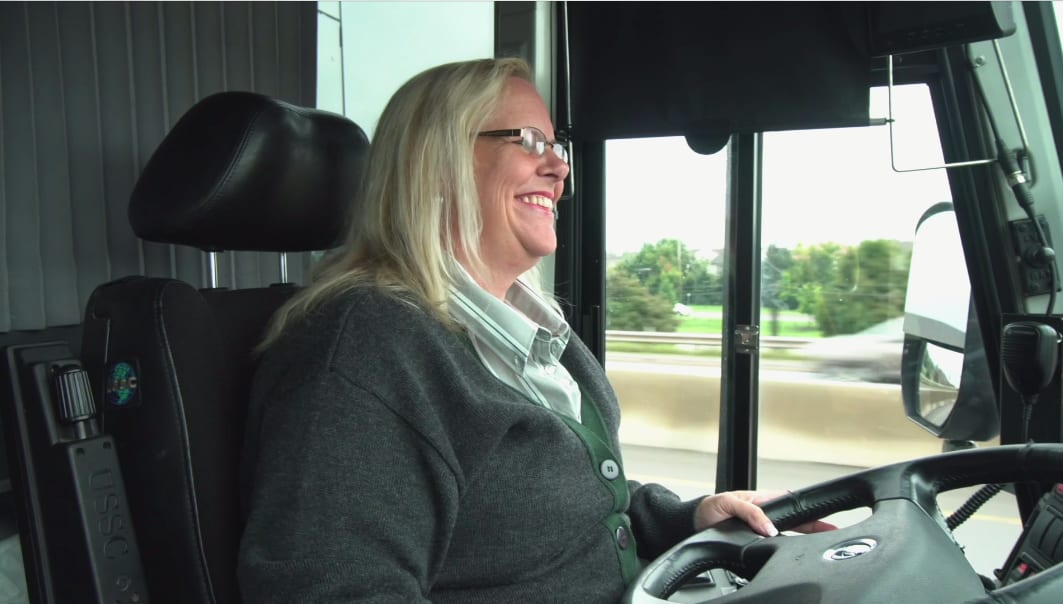How bus drivers are keeping things moving during COVID-19
Every GO Bus driver who pulls his or her vehicle away from a stop these days has a view and story.
Apr 2, 2020
The social pause that has kept many at home during the battle over COVID-19, doesn’t mean there aren’t people who still need to travel.
They are essential workers, and GO Transit drivers, including Lynette Higgins-Perez, make sure they get to where they’re going – from hospitals to seniors homes to food handling facilities.
If they need to get on the job, people like Higgins-Perez show up as well.
“On a normal day it’s very busy – one bus shift can carry 300 people a day, if not more, depending on the route,” says Higgins-Perez.
Now each trip can hold a little less than a dozen people.
She operates Route 36 and one of the stops is at Keele and Hwy. 401, steps away from Humber River Hospital.
Lynette Higgins-Perez has hope. She says if everyone does their part, whether it’s to stay home or in her case, help health care workers, doctors and nurses help people recover, than we can get through this. (Metrolinx Photo)
Higgins-Perez admits it is scary being out there at times and like many drivers, their health and safety is also top of mind. Recently, important changes were made to help keep drivers safe, including limiting where passengers can sit around drivers and introducing protective barriers.
Regardless, she and colleagues take the wheel for those who need to keep moving.
“It makes me feel good that I’m out there trying to do my part to help,” says Higgins-Perez. “Right now we all have a job we need to do.
“Whether you’re a doctor or a nurse or a police officer or a grocery store clerk or a bus driver, we’re all fighting an invisible enemy right now. We all have to do our part.”
The GO bus route is the same, but the feeling is very different for Peter Renzi.
He’s been driving GO customers for nearly a decade. These days, everything seems rewritten, as he delivers essential workers and travellers to where they need to be.
“It is so different, it’s surreal,” he says. “You’re driving out there and every day now it feels like it’s a Sunday morning.
“It’s eerie out on the roads.”
Renzi is used to seeing bumper to bumper traffic during the morning rush hour commute. Now, he only touches the brakes for stop lights and when he’s letting people on or off.
And it’s not just the roads that are quiet. What used to be a packed trip on his bus, now can hold less than a dozen people, all scattered quietly around the big vehicles.
“It’s a weird reality check as soon as you hop on the bus,” he explains.
“The seats directly behind me are taped off and everyone is spread out. But we have to do this so we can all be safe.”
Renzi misses the interaction and the casual conversations with customers, but remains motivated in his important mission to get essential workers to their destinations.
Peter Renzi says he’s prepared to work right through this pandemic. He’s seen here taking a selfie in front of his bus while he waits for a group of health care workers to arrive at Mount Pleasant GO Station in Brampton. (Photo submitted by Peter Renzi)
He shows up and takes the wheel every day for the passengers who depend on him and his colleagues.
It’s times like these that make drivers realize this is when they are needed the most.
“I’m contributing to the system and I’m helping people – it’s a noble job,” says Randy Pierre, another GO bus driver who’s playing his part during this pandemic.
Randy Pierre says there are a lot less people traveling but there are emergency responders, nurses and a couple of police officers who hop on board his bus. (Photo submitted by Randy Pierre)
“I’m proud of what all of us drivers are doing to help front line workers get to their job every day. It’s a very rewarding feeling.”
Pierre says that while it’s a difficult time, GO Transit has hired quality staff – It’s in his nature and the nature of his colleagues to continuously care for customers.
And as long as customers need to get to where they need to be during this health emergency, they will be behind the wheel to get them there.
by Nitish Bissonauth Metrolinx bilingual editorial content advisor
